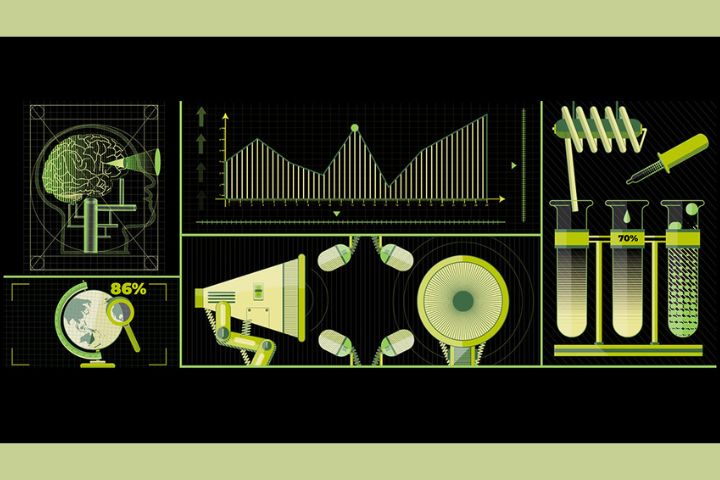Sustainability And Innovation: Possible With Communication

Sustainability and innovation are two elements inextricably linked to the future recovery of the national economy. Their influence also involves the local landscape. Both have a common vehicle to move toward their goals: communication. However, a transformed communication: is not only a factor for increasing visibility but a real tool for achieving business and commercial development objectives.
Let’s start with the effort companies must make to transform themselves into innovative and sustainable companies. This is undoubtedly one of the main missions also for companies in Friuli Venezia Giulia and the Northeast.
In fact, we recall that the National Recovery and Resilience Plan has outlined an overall project divided into six axes, placing the mission called “Green Revolution and ecological transition” in the first place.
This was followed by the missions relating to “Infrastructures for sustainable mobility,” “Digitisation, innovation, competitiveness and culture,”; “Education and Research,”; “Inclusion and cohesion,” and “Health.”
Rethinking the business system in a sustainable key
As can be understood, the cap of the green revolution and ecological transition is so broad and structural that it is articulated with each of the other five missions. Sustainable mobility, digitization, innovation, education and research, social inclusion, and health can all directly or laterally connect with sustainability.
The main mission is, therefore, to rethink the business system in a sustainable and innovative key, planning how to transform each segment of the economy into a generator of opportunities for the ecological transition.
The transition is also an opportunity for economic development as it will be able to move into a vast related industry.
Building a new society and a circular model of sustainability
In fact, it is not just a question of adapting to existing standards to reach the levels established by Europe and the international community in order to pollute less.
We are not talking about facade objectives but about a real revolution in living and doing that concerns every social entity, private or public, from companies of any size to the third sector.
What we are asked is to review the models and production processes completely.
The circular sustainability model must be effectively and concretely shared and internalized by all the components of the production process: from the conception to the marketing of the finished product, including packaging, logistics, and subsequent disposal or reuse/recovery.
We have the task of building a new society in which respect for raw material and awareness of its use is immersed in a clear design vision always aimed at saving and preserving the natural heritage.
No one can feel extraneous or excluded from this design. On the contrary, it must contribute by communicating and sharing its path with everyone, aiming at global and systemic objectives.
The central role of communication
As just mentioned, communication plays a central and indispensable role in all of this: presenting, communicating, and sharing models and goals to everyone and with everyone in the field, from the individual to companies passing through communities, is the only way to win this epochal challenge.
Communication becomes the driving force behind the development of actions to support environmental sustainability.
But that’s not all: it can be a driving factor for developing the company’s business, directing, through the digitization of channels, entry into new market niches even by spending less time and investing less money.
The fundamental role of communication
So we need effective, creative, persuasive, professional, and innovative communication to be able to achieve our goals.
Without it to support the new models of sustainable entrepreneurship, there will not even be business development because the new reality we have before us has adopted methods of growth intimately linked to digital communication, the only one capable of reading and interpreting the new forms that the market took over.
This is why even the plans and tools envisaged by the institutions foresee a fundamental role for communication by inserting it as a common glue in every programmed action.
Adopt a new mindset
It is a clear call to adopt a new global, sustainable and interconnected mentality, which supports us in modernizing the country and its productive forces.
What can companies do in all of this? First of all, consciously and actively enter into a circular economy project by integrating with the global processes of sustainable planning.
The indications coming from the institutions aim to stimulate an open and innovative attitude in companies, communicative towards all internal and external stakeholders.
The key role of industry
Entrepreneurial activity today cannot disregard environmental protection. The “green” choices, already adopted by large companies and supported by government indications, influence the entire chain of suppliers.
It is undeniable that the key role in this match is played by industry and manufacturing, whose commitment and ecological transition are essential to save the environment truly.
A manufacturing sector must be understood to its fullest extent, i.e., by the thousands and thousands of SMEs, the real energy source of development, and large companies.
For SMEs and large companies, staying out of this new trend means risking being cut off from the supply chains.
To undertake is to make sustainability
The formula “ESG (environmental sustainability objectives ) have entered the business equation” is also valid in Italy.
Undertaking today necessarily means making sustainability. In other words, designing and communicating is a business idea starting from a comparison with a global sustainability matrix that allows the company to be competitive in an increasingly greener market.
Thinking about the product cycle globally and consciously: from the procurement of certified raw materials, through accurate planning of logistics, packaging, and communication, up to the post-life destiny of every single component.
Sustainability, innovation, communication: assets for growth
If conceived in this way, the product becomes the testimonial of the company’s environmental commitment, becoming a real driving force for growth because it triggers a positive circularity between recognition of its positioning, growth of the brand’s authority, and sharing of corporate values from it conveyed.
This is why communication represents a true competitive asset in this broad and articulated process. It is essential to make people understand how much and how one’s company and its products differ from other brands on the market. In this, it generates intangible value and supports the sales and reputation consolidation processes.
There is no shortage of striking examples of companies that have transformed in a few decades from SMEs to multinationals by riding the communication on their environmental sustainability project.
Among these is Ikea, a brand now known and recognized by all, which, in just over seventy years, has transformed itself from a village shop into a reality that, in addition to selling an endless catalog of products, has also become a global promoter of the culture of sustainability. Ikea products speak of sustainable choices in the homes of those who buy them, identify their environmental sensitivity, lateral thinking aimed at the planet’s health, and respect for nature.
This is an easy example to understand that sustainability and communication are today’s strategic assets for the affirmation of a company and its products.
Companies, all of them, today have one of the most important opportunities to make a change in their business model by moving towards very long and profitable horizons. In this context, they can restructure their levels of competitiveness starting from the sustainability models they have or intend to adopt and from the communication projects they will use to communicate their choices.
In this global program of renewal of doing and being a business, there is all the sense of why sustainability and innovation, combined with communication, are essential assets to support growth.
Being sustainable, practicing active sustainability, and communicating it professionally and adequately, is an opportunity for development that can drag companies, and with them the whole country, towards a new era of important development.
Also Read : Kindness: A Company Asset


